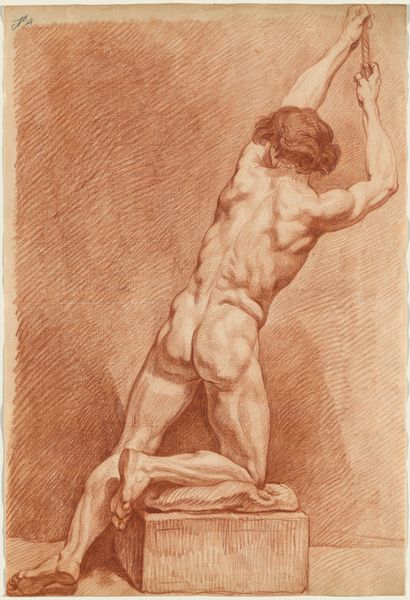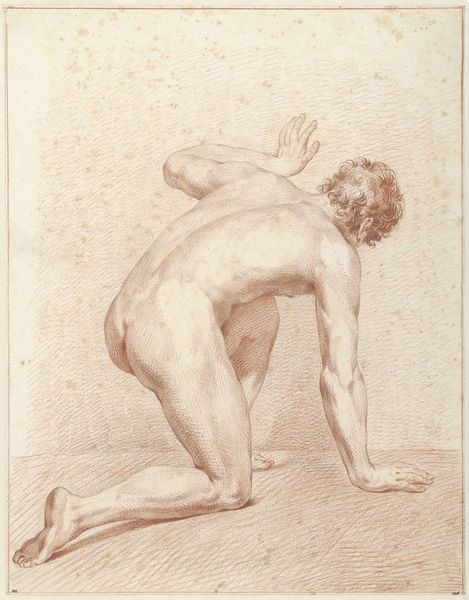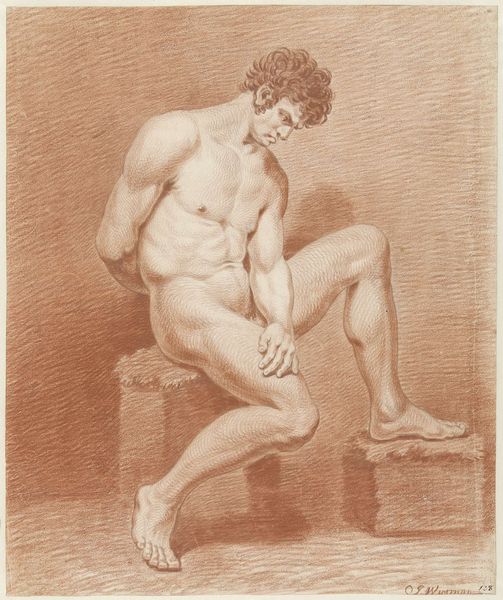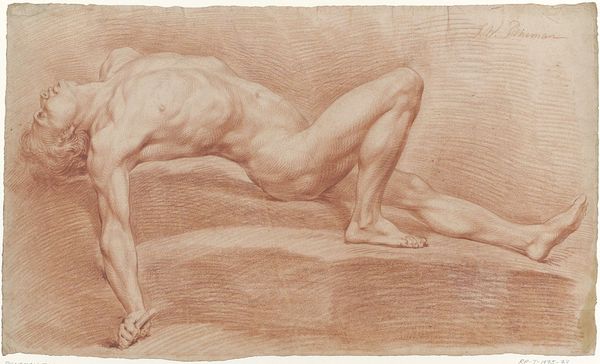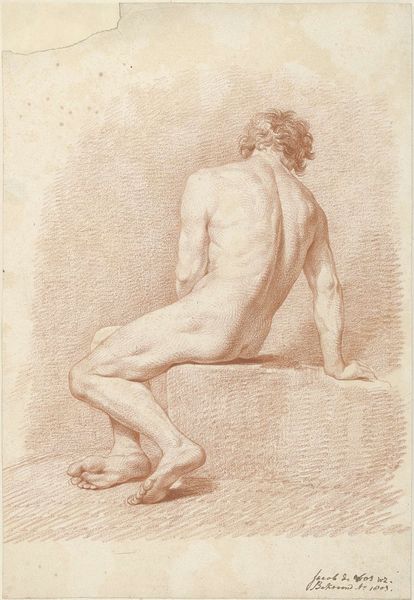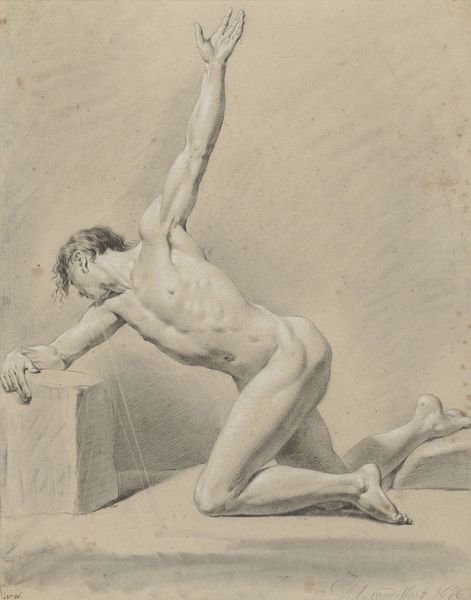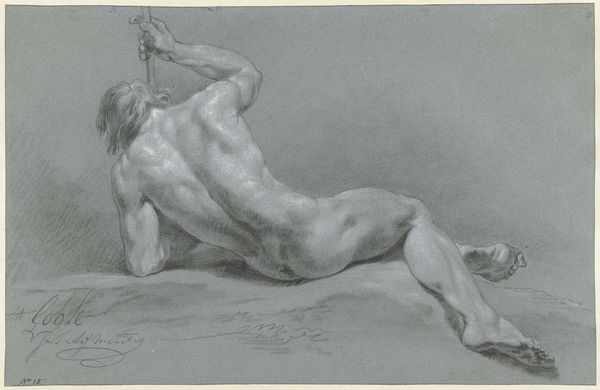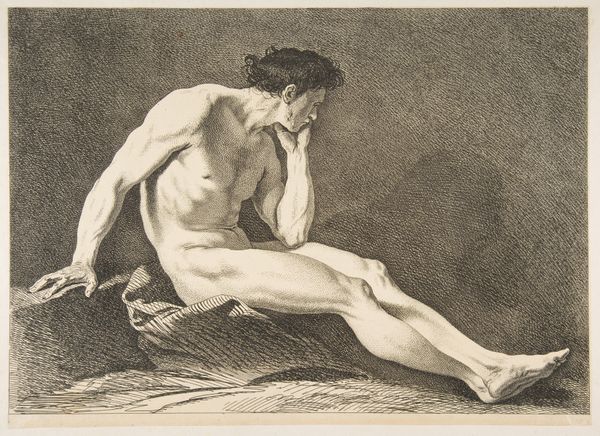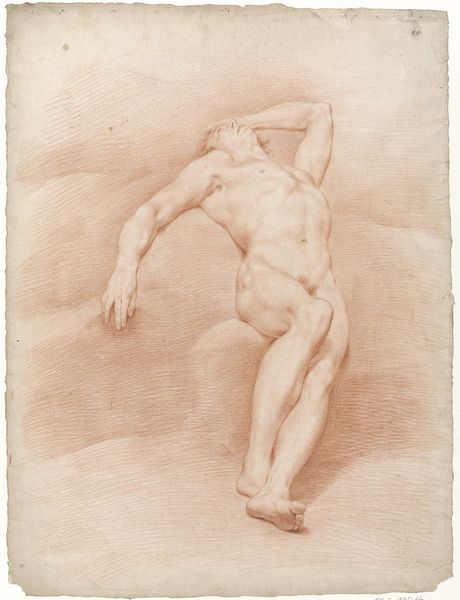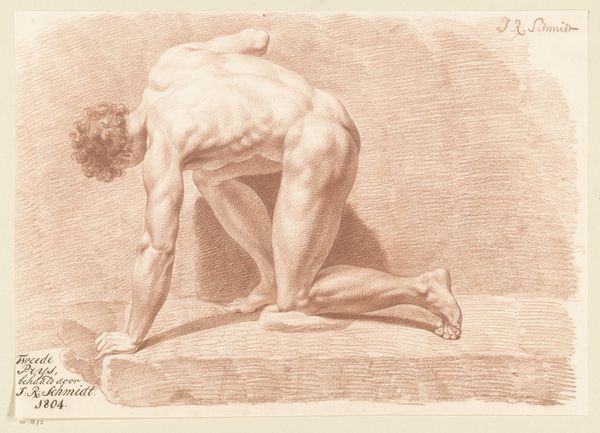
drawing, charcoal
#
drawing
#
charcoal drawing
#
figuration
#
romanticism
#
human
#
charcoal
#
academic-art
#
nude
#
male-nude
Dimensions: 22 x 22 cm
Copyright: Public domain
Editor: Here we have Théodore Géricault's "Naked man reversed on the ground," a charcoal drawing from 1817. The pose is just… odd. He's pushing himself up with one arm, leg raised, head bowed. It's powerful but vulnerable at the same time. What do you see in this piece? Curator: It's fascinating how Géricault uses the male nude, traditionally a symbol of strength and heroism, to express something far more complex. Considering this was made shortly after the Napoleonic Wars, what if we consider this reversed figure as a reflection of societal anxieties surrounding masculinity, power, and defeat? The body almost seems to be struggling, defying gravity – but towards what end? Editor: That’s a really interesting point. So you’re saying it's more than just an exercise in anatomy, it’s a statement? Curator: Precisely. And how does Géricault's choice of charcoal contribute? The medium allows for deep shadows and dramatic contrasts, heightening the sense of tension and perhaps even hinting at inner turmoil. He doesn't idealize the body. How does this inform a critique of dominant ideals surrounding the male form at this time? Editor: I never thought about the charcoal itself carrying meaning, just seeing it as a tool. So, rather than a celebration of the perfect male form like in classical art, he’s showing… struggle? Imperfection? Curator: Yes. And perhaps, resistance. Consider the socio-political climate of post-revolutionary France. What did it mean to depict the body, especially the male body, in such a vulnerable position? The figure resists the picture plane – pushing backwards in space and perhaps towards revolution? Editor: Wow, I see it so differently now. I thought it was just a study, but it's a powerful statement about the anxieties of the time. Curator: Exactly. It urges us to look beyond the surface and to consider the intersections of art, history, and the body.
Comments
No comments
Be the first to comment and join the conversation on the ultimate creative platform.

